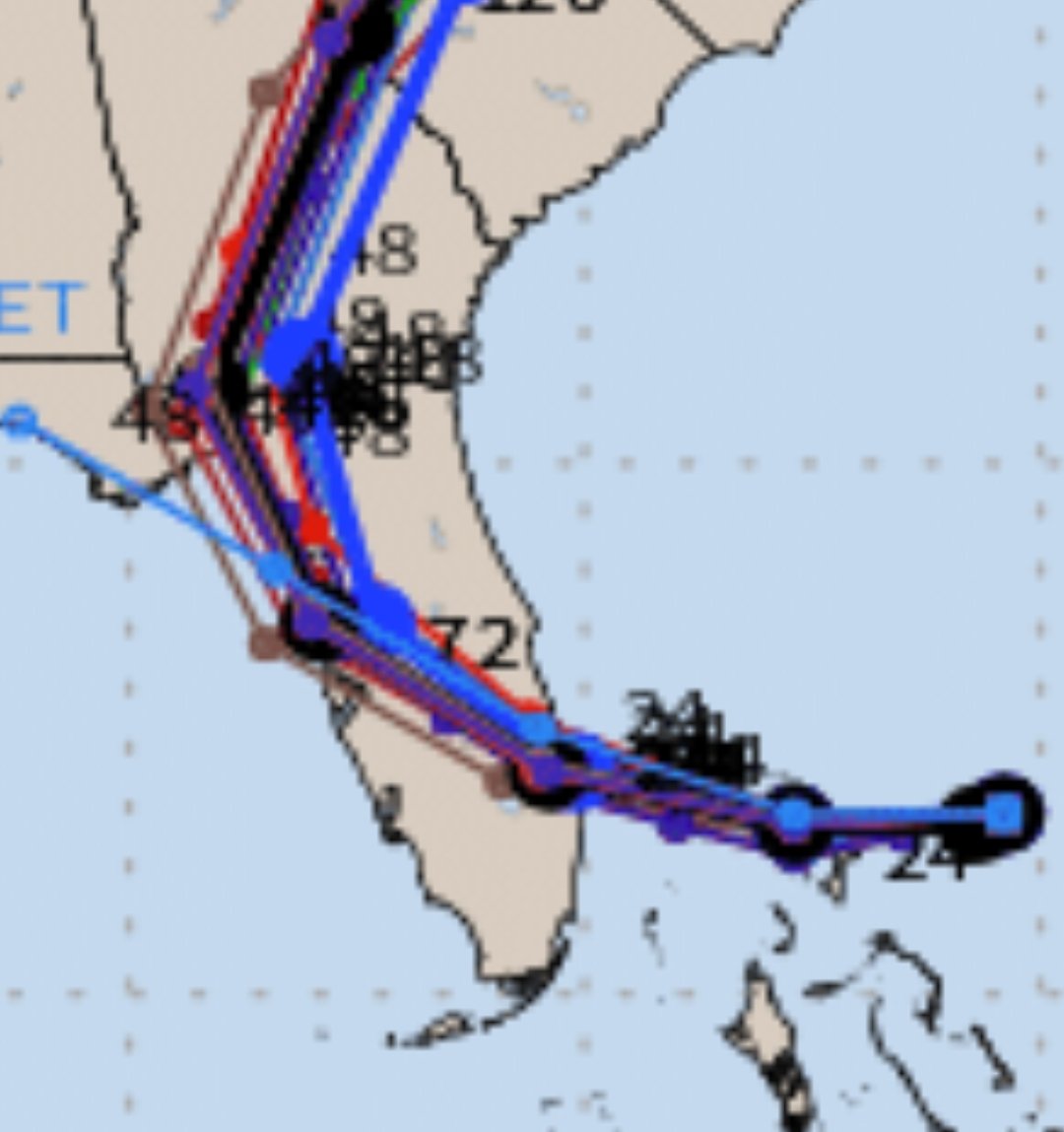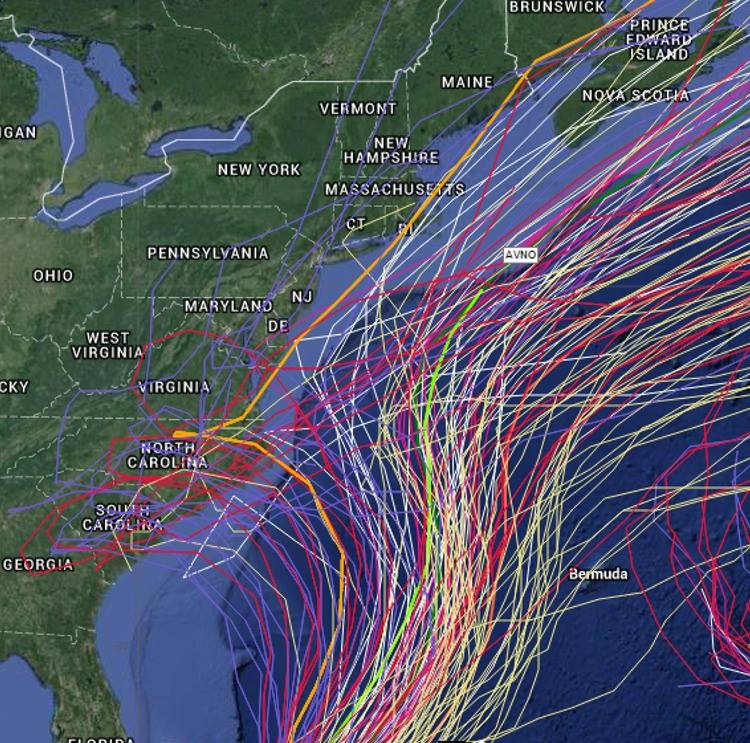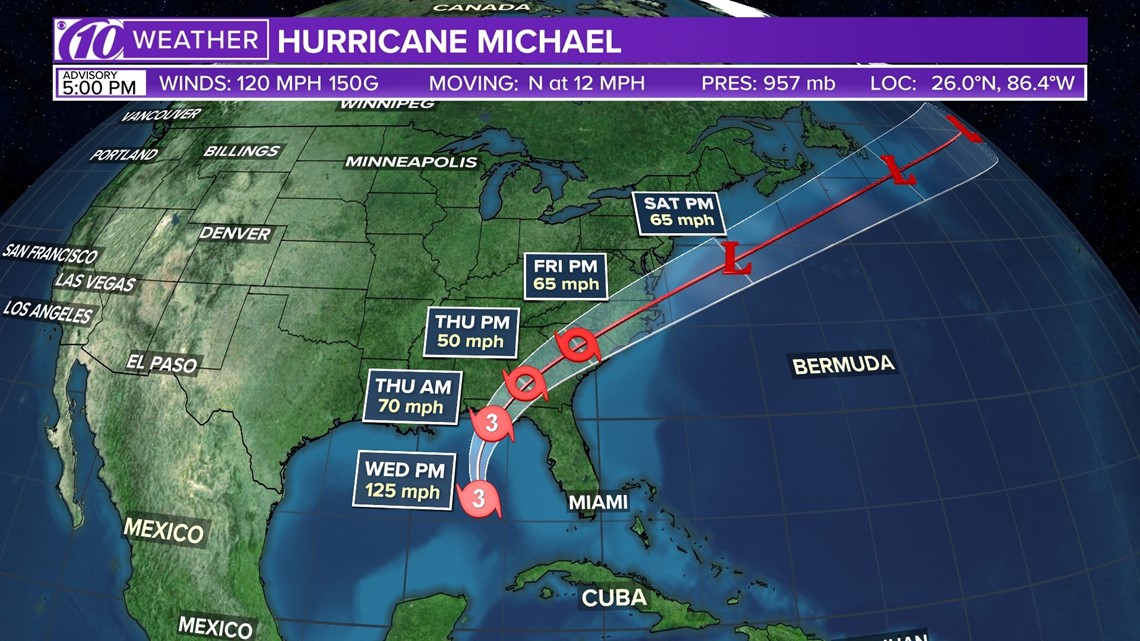Mike's Weather Page Spaghetti Models: Your Go-To For Storm Insights
When tropical weather starts to brew, people often look for clear, dependable information. That, you know, is where Mike's Weather Page really shines. Many folks turn to it for a straight look at what's happening, especially when it comes to those sometimes confusing "spaghetti models." These models, it's almost like, show us the possible paths a storm might take, and Mike has a way of making them easy to grasp for everyone watching.
Mike's Weather Page has become a trusted spot for countless individuals who live in or care about areas that feel the punch of hurricanes and tropical storms. The site, which was live as of Saturday, July 26, and then again on Monday, July 28, gives you a snapshot of real-time conditions. It's not just about raw data; it's about making sense of it all, so you can, like, make smart choices for your family and your home.
Understanding these weather models, particularly the "spaghetti models," can feel a bit like trying to solve a puzzle. But Mike's approach cuts through the jargon, helping you see the bigger picture without getting lost in tiny details. This means you get a clear idea of potential storm tracks, which is, honestly, what most people really need when a storm is heading their way.
Table of Contents
- About Mike and His Weather Page
- Who Is Mike, The Weather Expert?
- Understanding Spaghetti Models with Mike's Weather Page
- Getting the Most from Mike's Weather Page
- Frequently Asked Questions
About Mike and His Weather Page
Mike's Weather Page has grown into a significant resource for weather enthusiasts and those living in storm-prone regions. It’s a place where you can find direct, clear updates, especially during the busy hurricane season. The site has been a consistent presence, with updates happening regularly, like the ones noted on Saturday, July 26, and Monday, July 28. It's quite a helpful spot for timely weather news, you know.
The page offers a variety of tools and information beyond just storm tracking. For instance, you can find details on "rip current hazards and beach safety," which is, arguably, very important for coastal visitors. It also links to specific local forecasts, such as "Charleston's weather forecast and radar," "Tulsa Oklahoma weather forecast and radar," "Houston's weather forecast and radar information," and "Talladega's weather forecast and radar information." This regional focus means people can get very specific updates for their area, which is pretty useful.
Beyond the forecasts, Mike's Weather Page has built a community around its mission. There are options to "buy MWP merch," and you can even "donate on PayPal" or "become a Patreon" if you appreciate the work Mike does. This support helps keep the information flowing, which, in some respects, makes it a community-driven effort to stay safe and informed.
Who Is Mike, The Weather Expert?
Mike, the driving force behind Mike's Weather Page, has earned a strong reputation in the field of tropical meteorology. He's been recognized as a "tropical meteorology winner," which, you know, really speaks to his knowledge and dedication. People often look to his insights because he has a knack for making complex weather patterns understandable for everyone, not just fellow experts.
If you're curious to learn more about his background, you can "read about Mike on Wikipedia." This gives you a broader picture of his journey and what makes his page such a respected source. His work goes beyond just showing models; he helps people grasp the "NHC discussion," which is a key part of understanding official hurricane forecasts. It's this blend of expertise and clear communication that makes his page so valuable, and, honestly, quite popular.
Mike's approach is about sharing information in a way that truly helps people prepare and react during critical weather events. He's built a platform that feels approachable, rather than intimidating, which is, in a way, why so many people trust his updates. His passion for weather and helping others shines through in all the content he provides.
Mike's Personal Details & Bio Data
| Detail | Information |
|---|---|
| Primary Field | Tropical Meteorology |
| Notable Achievement | Tropical Meteorology Winner |
| Online Presence | Mike's Weather Page |
| Wikipedia Reference | Available (read about Mike on Wikipedia) |
| Community Engagement | Offers merchandise, accepts donations (PayPal, Patreon) |
| Content Focus | Spaghetti models, NHC discussion, storm names, local forecasts, safety info |
Understanding Spaghetti Models with Mike's Weather Page
When a tropical system forms, you'll often hear about "spaghetti models." These visuals are, basically, a collection of different computer model forecasts for a storm's path. Mike's Weather Page does a really good job of presenting these in a way that's not overwhelming, which is, you know, key for quick understanding. It's about seeing the range of possibilities, not just one fixed idea.
The reason these models look like "spaghetti" is because each line represents a different computer model's prediction for where the storm's center might go. Some lines might go more north, others more south, and some might even turn east or west. This collection of lines gives a visual sense of the forecast uncertainty, which is, honestly, always a part of predicting weather.
Mike's Weather Page doesn't just throw these models up and leave you to figure them out. He often provides context and explanation, helping you see what the models are generally agreeing on, and where there's still a lot of disagreement. This guidance is very helpful for making sense of what could be a confusing graphic, and, arguably, makes a big difference for many people.
What Are Spaghetti Models, Anyway?
Spaghetti models, or ensemble models, are, in short, a collection of many different computer simulations. Each simulation runs with slightly different starting conditions or different ways of calculating atmospheric physics. This slight variation in the setup helps to show the range of possible outcomes for a hurricane's track. It's a way of saying, "Here are all the ways this storm *could* go," which is, you know, pretty important for planning.
Think of it like this: if you're trying to predict where a ball will land after you throw it, you might throw it ten times from the same spot. Each throw might land in a slightly different place, but they'll generally cluster together. Spaghetti models are kind of like that, but for hurricanes. Each "throw" is a different computer model run, and the "landing spots" are the predicted storm tracks. This gives you a good idea of the most likely path, and also the outer limits of where it might go, which is, basically, what you need to know.
These models are generated by supercomputers around the world, using incredibly complex calculations. They take into account things like wind speed, atmospheric pressure, ocean temperatures, and how these factors interact. So, when you see those lines on Mike's Weather Page, you're looking at the output of some very powerful science, which is, you know, rather amazing when you think about it.
Why Mike's Weather Page Uses Them
Mike's Weather Page uses spaghetti models because they provide a comprehensive view of potential storm tracks, which is, honestly, much better than relying on just one forecast. A single model can sometimes be an outlier, meaning it predicts something very different from the others. By showing many models together, Mike helps his audience see the consensus, or lack thereof, among forecasters.
This approach helps people understand the uncertainty that is always a part of hurricane forecasting. If all the lines are tightly grouped, it suggests high confidence in a particular track. If they are spread out like a tangled mess, it means forecasters are less certain, and the storm could go in many different directions. This transparency is, in some respects, very valuable for public safety.
Mike's Weather Page also presents these models in a very visual and easy-to-digest format. He often highlights the most important aspects, helping viewers quickly identify the key takeaways. This simplifies what could be a very technical display, making it accessible to a wide audience, which is, you know, a big part of why his page is so popular.
How to Interpret the Lines
When you look at the spaghetti models on Mike's Weather Page, the first thing to notice is the general clustering of the lines. Where the lines are closest together, that's where the models are showing the most agreement, and it's often the most likely path for the storm. This area of agreement is, basically, your best guess for the storm's track.
If the lines are very spread out, especially further into the future, it means there's a lot of uncertainty. This wide spread tells you that the storm's path is still very much up in the air, and you should be prepared for a wide range of possibilities. It's a visual cue that, you know, things could change quite a bit.
Mike often adds his own commentary, pointing out which models he trusts more, or why certain models might be outliers. This expert insight is, honestly, incredibly helpful because it gives you a deeper understanding than just looking at the lines alone. It helps you weigh the information more effectively, and, in a way, feel more prepared.
Getting the Most from Mike's Weather Page
To really get the most out of Mike's Weather Page, it's a good idea to visit regularly, especially during hurricane season. The "weather page is live as of Saturday, July 26" and "Monday, July 28" indicates a commitment to fresh updates, which is, you know, crucial when dealing with fast-moving weather. Keeping up with these updates helps you stay ahead of potential changes.
Beyond the spaghetti models, Mike's Weather Page offers a wealth of other resources. You can find information about "MWP songs" or even check out "Hurricane Harbor," which adds a unique touch to the site. There's also a "store #1 store #2" where you can "buy MWP merch," which helps support the page and its mission. It's a pretty comprehensive hub for weather fans, honestly.
For those who want to stay even more connected, there's the option to "Search for the 'mikes weather page' app." Having the app on your phone means you can get updates on the go, which is, arguably, very convenient during a storm. All these elements work together to provide a holistic and very user-friendly experience for staying informed about weather.
Staying Informed with NHC Discussion
Mike's Weather Page often references the "NHC discussion," which stands for the National Hurricane Center discussion. This is a very important part of understanding official forecasts. The NHC provides detailed written analyses that explain why they are forecasting a storm to go a certain way, and what uncertainties they are still dealing with. Mike helps break down these discussions, which is, you know, pretty helpful for many people.
Reading the NHC discussion, especially with Mike's guidance, can give you a deeper insight into the science behind the forecasts. It explains things like why a storm might speed up or slow down, or why it might turn in a particular direction. This level of detail is, honestly, crucial for anyone trying to make sense of complex weather patterns, and, in a way, helps build trust in the information provided.
Mike also touches on "MWP storm names," which is a fun way to engage with the hurricane season while still focusing on the serious aspects of storm tracking. This blend of serious information and lighter elements makes the page approachable and keeps people coming back, which is, basically, a smart way to share important safety messages.
Local Weather Updates and Safety
Mike's Weather Page doesn't just focus on big, overarching hurricane tracks; it also helps you find very specific local weather information. For example, it provides links to "Charleston's weather forecast and radar for timely updates on local weather conditions," which is, you know, very important for people in that area. Similarly, you can find updates for "Tulsa Oklahoma weather forecast and radar," and "Houston's weather forecast and radar information," and even "Talladega's weather forecast and radar information." This localized data is, honestly, a huge help for residents.
Beyond forecasts, the page also emphasizes safety. There's a section to "Learn about rip current hazards and beach safety." This information is, arguably, vital for anyone visiting coastal areas, even when there isn't a hurricane brewing. Understanding these everyday dangers can save lives, which is, basically, why Mike includes it.
By providing both broad storm tracking and specific local details, Mike's Weather Page helps people prepare for various weather scenarios. It's a very practical resource that goes beyond just the immediate threat of a hurricane, making it useful year-round for different weather concerns. This comprehensive approach is, in a way, what makes the page so valuable to its audience.
Connecting with the MWP Community
Mike's Weather Page has fostered a strong sense of community, which is, honestly, a really nice thing to see. People who follow the page aren't just consumers of information; they're part of a group that shares a common interest in weather and safety. This connection is, you know, strengthened by the various ways you can engage with Mike and his work.
If you appreciate the effort Mike puts into providing clear and timely weather updates, there are several ways to show your support. You can "donate on PayPal" or "become a Patreon," which helps keep the page running and the information flowing. This kind of direct support is, basically, how many independent content creators keep their valuable resources available to the public.
The availability of "MWP songs" and "MWP merch" also helps build this community feeling. It's a way for people to show their affiliation and support, which is, you know, pretty cool. This blend of informative content and community engagement makes Mike's Weather Page more than just a website; it's a hub for weather-aware individuals.
Frequently Asked Questions
Here are some common questions people often have about Mike's Weather Page and its use of spaghetti models:
What are spaghetti models, and how does Mike's Weather Page use them?
Spaghetti models are, in short, a collection of different computer model forecasts that show the possible paths a tropical storm or hurricane might take. Each line on the chart represents a separate model's prediction. Mike's Weather Page presents these models to give viewers a comprehensive look at the range of potential storm tracks, helping to illustrate forecast uncertainty in a very clear way. He often provides commentary to help you understand what the models are generally agreeing on, which is, you know, pretty helpful.
How accurate are the spaghetti models shown on Mike's Weather Page?
The accuracy of spaghetti models can vary, especially further out in time. They are, basically, tools to show the *range* of possibilities, not a single definitive answer. Mike's Weather Page helps by showing multiple models, which allows you to see where there's consensus among different forecasts. When the lines are tightly grouped, it suggests higher confidence in a track. When they are spread out, it means more uncertainty. Mike's explanations often help interpret this accuracy, which is, honestly, very valuable.
How can I stay updated with Mike's Weather Page during hurricane season?
To stay updated, you can visit Mike's Weather Page regularly, as it's "live as of Saturday, July 26" and "Monday, July 28," indicating frequent updates. You can also "Search for the 'mikes weather page' app" for mobile access. Mike often provides insights on "NHC discussion" and "MWP storm names," keeping you informed on official forecasts and relevant details. Don't forget to check the local weather sections for your area, which is, arguably, a smart move for specific conditions.
Mike's Weather Page continues to be a go-to spot for many looking for clear, concise weather information. It’s a place where complex data, like those spaghetti models, becomes understandable, helping countless people stay safe and prepared. You can learn more about Mike's Weather Page on our site, and for more specific details, be sure to check Mike's Wikipedia page for his background and achievements.

Mike's Weather Page on Twitter: "Morning spaghetti models are pretty

Spaghetti Chart Hurricane Lee | Portal.posgradount.edu.pe

Track major Hurricane Michael: Spaghetti models, forecast cone and